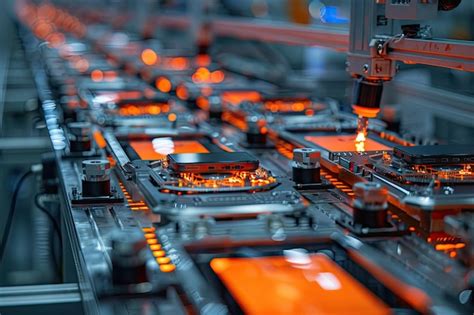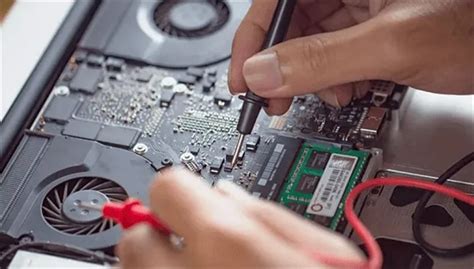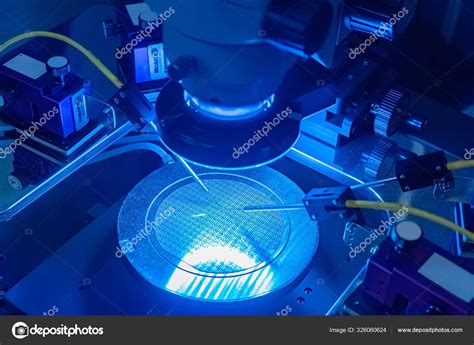Automated Electronics Assembly: Precision and Productivity
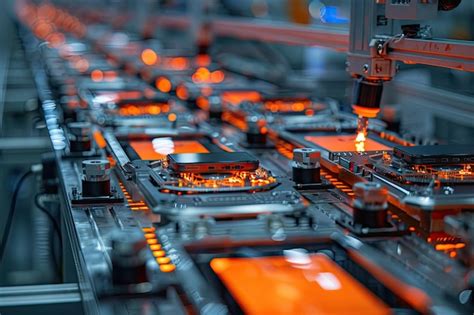
Key Takeaways
Modern PCB assembly processes have become synonymous with precision engineering, driven by advancements in robotic soldering and automated optical inspection. By integrating PCBA (Printed Circuit Board Assembly) systems, manufacturers achieve micron-level accuracy, reducing human error by up to 90% in tasks like component placement and solder paste application. This shift not only enhances product reliability but also accelerates throughput—automated lines can complete PCB assembly cycles 3–5x faster than manual methods.
A key advantage lies in scalable workflows. For example:
| Process Stage | Manual (Time/Cycle) | Automated (Time/Cycle) |
|---|---|---|
| Component Placement | 12–15 mins | 2–4 mins |
| Soldering | 8–10 mins | 1–3 mins |
| Quality Inspection | 6–8 mins | 0.5–1 min |
Such efficiency gains enable manufacturers to meet rising demand without compromising PCBA quality. Additionally, machine learning algorithms optimize material usage, cutting waste by 15–20% in high-volume production. As industries adopt PCB assembly automation, the convergence of IoT-enabled monitoring and adaptive robotics ensures systems evolve alongside technological advancements, future-proofing manufacturing ecosystems.
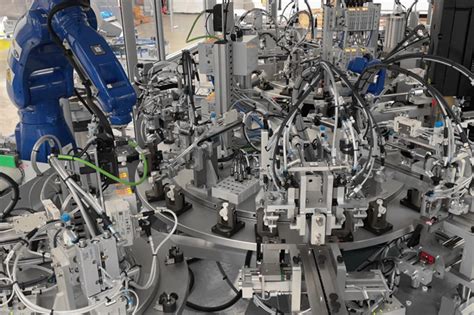
Enhancing Precision in Electronics Manufacturing
In PCB assembly and PCBA (Printed Circuit Board Assembly), achieving micrometer-level accuracy is critical for ensuring reliable performance in modern electronic devices. Automated systems leverage vision-guided robotics and machine learning algorithms to place components with tolerances as tight as ±0.01mm, eliminating human error in tasks like solder paste application or surface-mount technology (SMT). For instance, automated optical inspection (AOI) systems scan boards post-assembly, flagging defects such as misaligned capacitors or insufficient solder joints—issues imperceptible to manual inspection.
The integration of closed-loop feedback mechanisms further refines precision by dynamically adjusting parameters like placement speed or temperature during PCBA processes. This ensures consistency across high-volume production runs, even when handling miniaturized components like 0201 resistors or micro-BGA chips. By standardizing workflows through automation, manufacturers reduce variability between batches while maintaining compliance with ISO 9001 and IPC-A-610 standards. Such advancements not only enhance product reliability but also lay the foundation for scalable innovation in sectors ranging from medical devices to aerospace electronics.
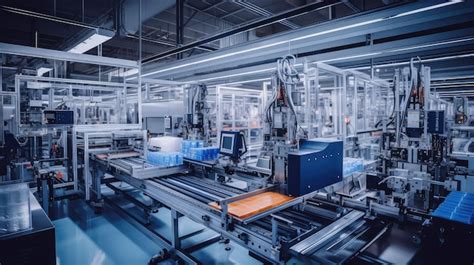
Boosting Productivity Through Automation
The integration of automated electronics assembly systems has become a cornerstone for manufacturers aiming to maximize output without compromising precision. By replacing manual processes with robotic solutions, facilities can achieve unprecedented throughput in PCB assembly workflows. For instance, automated pick-and-place machines reduce component placement times by over 60%, while advanced conveyor systems synchronize PCBA stages to eliminate bottlenecks. This shift not only accelerates production cycles but also minimizes human error, ensuring consistent quality across high-volume orders.
Furthermore, data-driven automation enables real-time adjustments. Sensors embedded in assembly lines monitor parameters like solder temperature and component alignment, allowing systems to self-correct deviations before defects occur. A 2023 industry report highlighted that manufacturers using automated PCB assembly saw a 40% reduction in cycle times and a 25% increase in yield rates compared to semi-automated setups. Such efficiency gains are critical for meeting rising demand in sectors like consumer electronics and IoT, where rapid scaling is essential.
By streamlining repetitive tasks, automation frees skilled technicians to focus on complex problem-solving and innovation. This balance between human expertise and robotic precision creates a synergistic environment where PCBA production scales seamlessly, driving cost-effective growth while maintaining stringent quality standards.
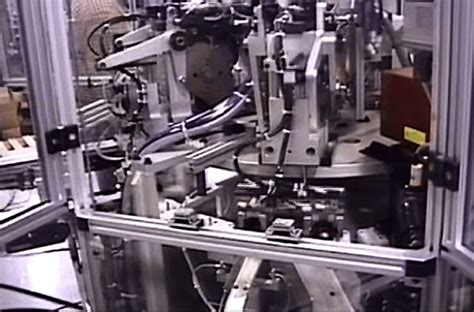
Robotics Revolution in Assembly Lines
The integration of robotics into PCB assembly and PCBA processes has redefined precision and efficiency in electronics manufacturing. Modern robotic arms, equipped with machine vision systems, perform tasks such as component placement and soldering with micron-level accuracy, reducing human error by over 60% in high-density board production. These systems excel in handling repetitive tasks, enabling 24/7 operation while maintaining consistent throughput—a critical advantage for industries scaling to meet IoT and 5G device demands.
Tip: Regular calibration of robotic vision systems ensures alignment accuracy, particularly for multi-layer PCB assembly requiring sub-millimeter tolerances.
Advanced collaborative robots (cobots) now work alongside technicians, combining human problem-solving with robotic speed. For PCBA, this synergy accelerates complex workflows, such as testing and reflow soldering, while adaptive grippers minimize damage to delicate components. The shift to modular robotic cells also allows manufacturers to reconfigure lines rapidly, cutting downtime by 30% during product transitions.
"Flexibility is the new competitive edge. Robotic automation turns rigid assembly lines into dynamic ecosystems."
By embedding AI-driven analytics, these systems predict maintenance needs and optimize cycle times, further enhancing ROI. As PCB assembly evolves, robotics not only address labor shortages but also elevate quality benchmarks, ensuring compliance with aerospace and medical-grade standards. This transformation underscores how smart automation is no longer optional—it’s the backbone of future-ready manufacturing.
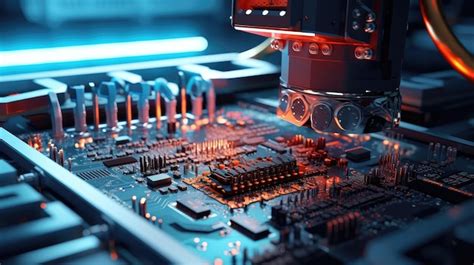
Streamlined Workflows for Scalable Production
Modern PCB assembly processes thrive on streamlined workflows that eliminate redundancies while accelerating production cycles. By integrating automated systems for PCBA (printed circuit board assembly), manufacturers achieve seamless coordination between component placement, soldering, and inspection stages. Advanced conveyor systems synchronize with robotic arms to transfer boards between stations, reducing idle time by up to 40% compared to manual handling. Real-time monitoring tools further optimize workflows by identifying bottlenecks—such as delayed solder paste application or misaligned components—enabling instant adjustments without halting production.
Central to scalability is the adoption of modular automation, where flexible robotic cells adapt to varying product designs. For instance, surface-mount technology (SMT) lines equipped with vision-guided systems can switch between PCB assembly layouts in minutes, supporting high-mix, low-volume demands. Additionally, automated inventory management ensures components like microchips or resistors are replenished precisely when needed, minimizing downtime. This agility is critical for industries requiring rapid scaling, such as consumer electronics or IoT device manufacturing.
By unifying PCBA workflows with enterprise resource planning (ERP) software, manufacturers gain end-to-end visibility, from raw material procurement to final quality checks. Such integration not only enhances traceability but also supports data-driven decision-making, ensuring scalable operations without compromising precision or reliability.
Ensuring Quality with Automated Systems
Modern PCB assembly processes rely heavily on automated systems to maintain stringent quality standards while scaling production. By integrating real-time monitoring and machine vision technologies, manufacturers can detect microscopic defects in PCBA components—such as soldering errors or misaligned parts—with accuracy exceeding human capability. Advanced inspection systems, including automated optical inspection (AOI) and X-ray testing, analyze every connection point, ensuring compliance with industry specifications like IPC-A-610. These tools not only reduce human error but also generate actionable data to refine processes iteratively.
Automation further enhances quality through closed-loop feedback mechanisms. For instance, if a robotic placement system identifies inconsistencies in component positioning, it automatically adjusts calibration parameters to correct deviations. This self-optimizing capability minimizes rework rates and prevents costly delays, particularly in high-volume PCB assembly lines. Additionally, traceability systems embedded in PCBA workflows track each unit from raw materials to final testing, enabling rapid root-cause analysis in case of anomalies.
By aligning precision engineering with smart automation, manufacturers achieve near-zero defect rates while maintaining flexibility to adapt to evolving design requirements. This synergy between technology and quality control ensures that even complex electronics meet rigorous performance benchmarks, reinforcing trust in automated production ecosystems.

Advanced Robotics in Modern Manufacturing
The integration of advanced robotics into PCB assembly and PCBA processes has redefined precision and efficiency in electronics manufacturing. Modern robotic systems, equipped with machine learning algorithms and high-resolution vision systems, execute tasks such as surface-mount technology (SMT) placement and micro-soldering with sub-micron accuracy. These systems minimize human error while adapting dynamically to variations in component sizes or circuit board designs, ensuring consistent output even in high-mix production environments.
A key advantage lies in the seamless coordination between automated assembly lines and quality control mechanisms. For instance, robotic arms paired with AI-driven inspection tools detect defects like misaligned components or solder bridging during PCBA stages, enabling real-time corrections before downstream processes. This closed-loop workflow reduces scrap rates by up to 40% compared to manual methods, according to industry studies.
Furthermore, modular robotics platforms allow manufacturers to scale operations rapidly. By reprogramming robots for new PCB assembly protocols—rather than retooling entire lines—companies achieve faster time-to-market for evolving product designs. Such flexibility, combined with the ability to operate 24/7, positions advanced robotics as a cornerstone of cost-effective, high-volume production in today’s competitive electronics sector.
Automated Assembly for Cost-Effective Growth
The integration of automated electronics assembly systems has become a cornerstone for manufacturers seeking scalable and cost-efficient production strategies. By leveraging PCB assembly (PCBA) automation, companies significantly reduce labor-intensive processes while maintaining consistent output quality. Advanced robotic systems, equipped with machine vision and precision placement capabilities, minimize material waste and rework costs—critical factors in high-volume electronics manufacturing.
Transitioning to automated workflows enables dynamic resource allocation, allowing facilities to adapt to fluctuating demand without compromising throughput. For instance, modular PCBA lines can be reconfigured rapidly to accommodate design changes or new product introductions, eliminating downtime associated with manual retooling. This agility not only lowers operational expenses but also accelerates time-to-market—a decisive advantage in competitive industries.
Moreover, the data-driven nature of modern automation provides actionable insights into production bottlenecks, enabling continuous process optimization. Real-time monitoring of PCB assembly parameters, such as solder paste application accuracy and component alignment, ensures defects are detected early, reducing scrap rates. Over time, these efficiencies compound, delivering measurable ROI while positioning businesses for sustainable growth in an increasingly automated industrial landscape.
Precision Engineering Meets Smart Automation
The convergence of precision engineering and intelligent automation has redefined modern PCB assembly processes, enabling manufacturers to achieve micron-level accuracy while maintaining high throughput. Advanced robotic systems, equipped with vision-guided placement technologies, ensure components as small as 01005 packages are positioned flawlessly on PCBA boards. These systems integrate real-time feedback loops, where machine learning algorithms analyze placement errors and dynamically adjust parameters, reducing defects by over 60% in high-volume production.
Smart automation further enhances repeatability, critical for applications like aerospace or medical devices, where tolerances often measure less than 0.1mm. By combining modular fixturing with adaptive robotics, manufacturers can swiftly reconfigure assembly lines for diverse product batches without sacrificing precision. For instance, dual-arm collaborative robots now handle delicate tasks such as soldering micro-BGA components, a process once reliant on manual expertise.
This synergy not only accelerates cycle times but also ensures seamless scalability. Automated optical inspection (AOI) systems, paired with AI-driven analytics, validate each PCB assembly stage, creating a closed-loop quality assurance framework. As a result, industries demanding ultra-reliable electronics—from automotive to IoT—leverage these advancements to meet stringent performance standards while optimizing production costs. The marriage of precision and automation continues to push the boundaries of what’s achievable in PCBA, setting new benchmarks for efficiency and reliability.
Conclusion
The integration of automated electronics assembly systems marks a pivotal shift in modern manufacturing, where precision and efficiency converge to redefine production paradigms. By leveraging advanced robotics and intelligent workflows, industries achieve unparalleled accuracy in PCB assembly processes, minimizing human error while accelerating output. Scalability becomes a tangible asset as PCBA lines adapt seamlessly to fluctuating demands, ensuring consistent quality across high-volume batches.
Automation’s role extends beyond speed; it embeds traceability and real-time diagnostics into every stage, fortifying defect detection and corrective measures. This not only safeguards product integrity but also reduces waste—a critical advantage in cost-sensitive markets. Furthermore, the synergy between smart automation and PCB assembly technologies enables manufacturers to meet evolving consumer expectations for compact, high-performance devices.
As industries continue to embrace these innovations, the focus shifts toward sustainable growth. Automated systems optimize resource utilization, lower energy consumption, and extend equipment longevity, aligning productivity gains with environmental stewardship. In this dynamic landscape, automated electronics assembly stands as the cornerstone of a resilient, future-ready manufacturing ecosystem.
Frequently Asked Questions
How does automated PCB assembly improve manufacturing precision?
Automated PCBA systems utilize vision-guided robots and AI-driven calibration to achieve micron-level accuracy. By eliminating human error in component placement and soldering, these systems ensure consistent quality across high-volume production runs.
What cost benefits can manufacturers expect from PCB assembly automation?
While initial investments in PCBA equipment are significant, automation reduces long-term labor costs and material waste. Integrated quality control modules minimize rework rates, delivering ROI within 12-18 months for mid-scale operations.
Can automated workflows handle complex mixed-technology boards?
Modern PCB assembly lines combine surface-mount technology (SMT) and through-hole assembly robots, adapting seamlessly to high-density interconnect (HDI) designs. Dual-arm collaborative robots now manage hybrid components with 99.98% placement accuracy.
How scalable are automated PCBA solutions for startups?
Modular automation platforms allow gradual scaling—from semi-automated prototyping stations to full-scale Industry 4.0-ready lines. Cloud-based process monitoring enables small batches to transition smoothly into mass production without overcapacity risks.
Do automated systems require specialized maintenance teams?
Predictive maintenance algorithms in advanced PCB assembly units analyze motor wear and nozzle performance, scheduling interventions before failures occur. Most systems include remote diagnostics, reducing downtime by 40% compared to manual troubleshooting.
Ready to Transform Your Production Line?
Explore tailored PCB assembly solutions that align with your scalability needs. For a detailed consultation on implementing automated PCBA systems, please click here.

